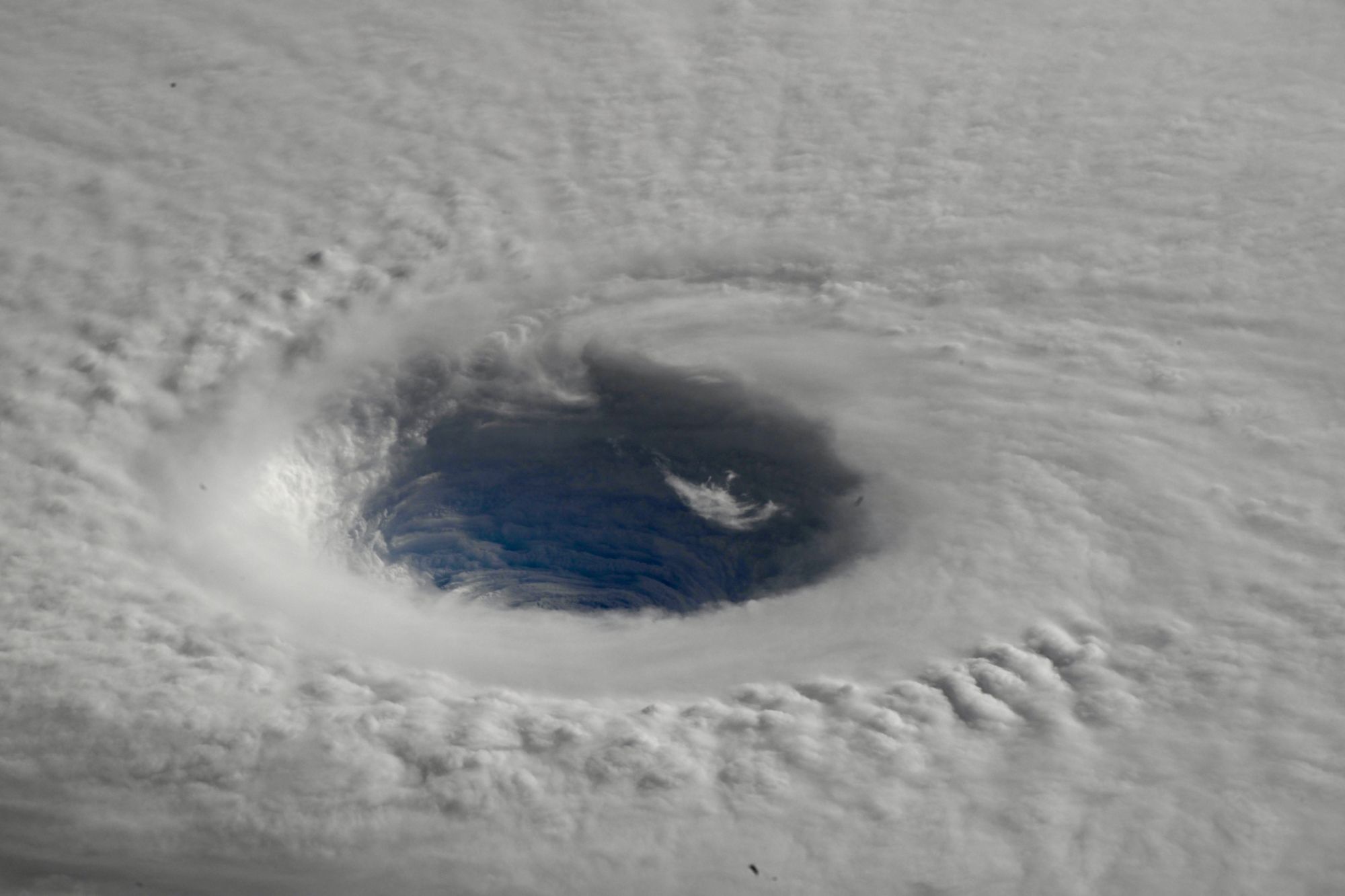Astronaut Kimiya Yui captured from ISS the Typhoon Halong that is approaching Izu Islands. The Japan Meteorological Agency reported that the storm is expected to approach the Izu Islands tonight and pass over southern islands such as Hachijojima and Aogashima on Oct. 9th, bringing violent winds and torrential rain strong enough to cause structural damage.

The eye is a region of mostly calm weather at the center of a tropical cyclone. The eye of a storm is a roughly circular area, typically 30-65km in diameter. It is surrounded by the eyewall, a ring of towering thunderstorms where the most severe weather and highest winds of the cyclone occur. The cyclone’s lowest barometric pressure occurs in the eye and can be as much as 15% lower than the pressure outside the storm. In strong tropical cyclones, the eye is characterized by light winds and clear skies, surrounded on all sides by a towering, symmetric eyewall. In weaker tropical cyclones, the eye is less well defined and can be covered by the central dense overcast, an area of high, thick clouds that show up brightly on satellite imagery. Weaker or disorganized storms may also feature an eyewall that does not completely encircle the eye or have an eye that features heavy rain. In all storms, however, the eye is where the barometer reading is lowest.
The local scenery on the ground is as follows.

Reference: Kimiya Yui’s Tweet
See earthview photo gallery: LiVEARTH